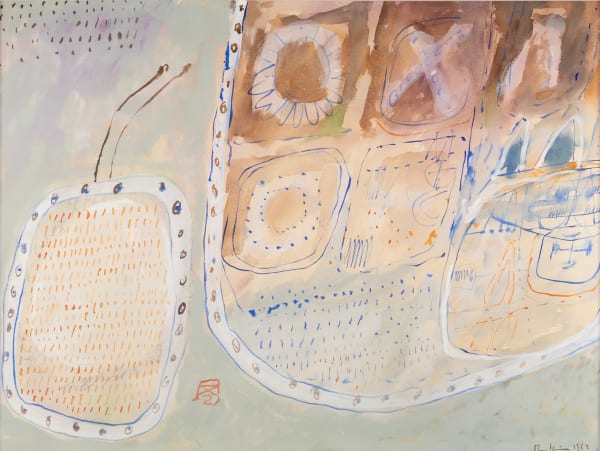Martin Bradley 1931-2023
Martin Bradley is a 20th-century painter.
Born in London in 1931, from childhood Bradley was intent on becoming an artist. As his guardian was against the idea, Bradley ran away to sea when he was fourteen. Whilst working in Central and South American he began painting portrait images of his shipmates before returning to London three years later. Back in London Bradley studied oriental languages, literature and art and developed a life long fascination with the art and calligraphy of China and Japan.
Bradley soon became acquainted with the unconventional circle of artists and writers known as the 'Angry Young Men' and was known as the 'Rimbaud of Soho' due to his hard-drinking lifestyle. Galleries such as Gimpel Fils and the Redfern Gallery began to exhibit his work and in 1956 he joined Gallery One. British collectors such as Sir Roland Penrose, Sir Herbert Read and Dame Barbara Hepworth acquired works by Bradley, and when he went to Paris in the late 1950s he was taken up by Rudolphe Augustinci, director of the Galerie Rive Gauche, who was notable for showing artists such as Max Ernst, Yves Tanguy and Rene Magritte. Augustinci promoted Bradley's work in Europe; and in London, Victor Musgrave continued to exhibit Bradley's paintings at Gallery One. Bradley's work from the 1950s and 1960s is primarily abstract, with strong calligraphic and symbolic influences.
Bradley lived for some years between Ibiza and Paris, and spent much of 1958 in Brazil on a scholarship. In 1961, after a personal crisis, Bradley served briefly in the Spanish Foreign Legion, before deserting and returning to London. In the later 1960s and early 1970s, Bradley travelled extensively in Asia and cultivated his gift as a linguist: Bradley is able to speak more than ten languages including Chinese, Japanese, Tibetan and Hindi. He became a convert to Nichiren Shôshû Buddhism 'which changed the whole foundation of my thinking', and has lived in Italy, France and England. Since 1954, Bradley has had more than 130 solo exhibitions and his work has been collected world-wide. He has lived in Belgium with his Japanese wife, Tatsuko, since 1989. He continues to paint and exhibit and also to study and make translations of Buddhist texts from Japanese to English.




